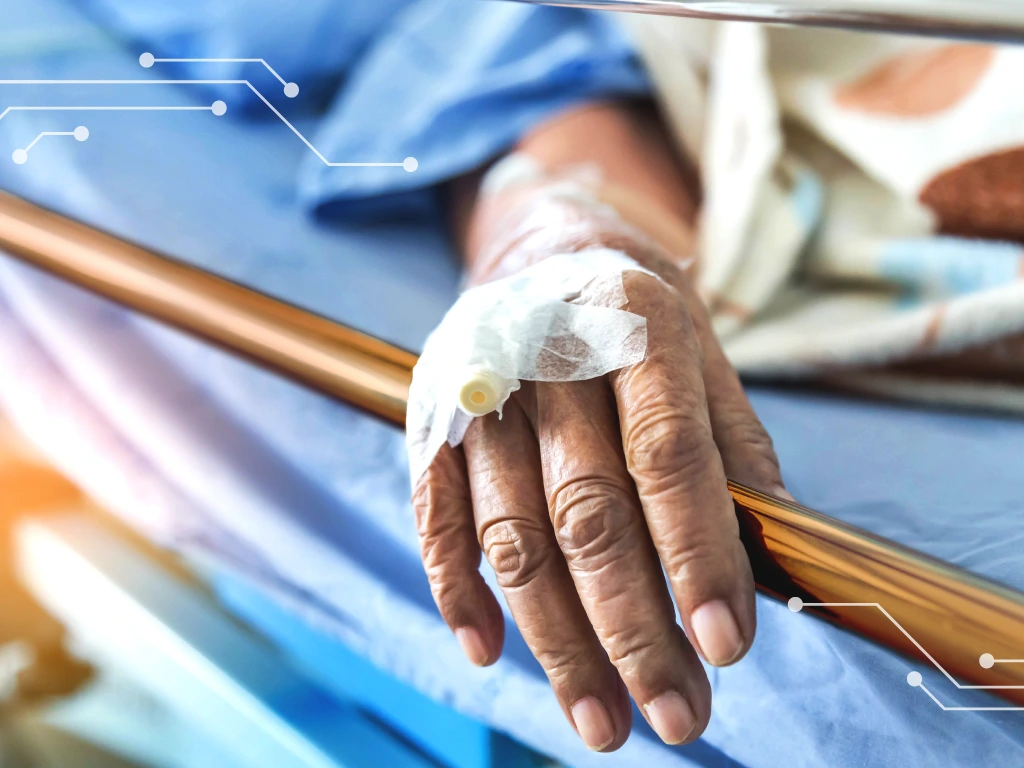Healthcare-Associated Infections - Impact of Technology on Our Health
Were you aware that it took centuries for the medical community to embrace the notion that combining germs with open wounds is not advisable? Despite significant advancements in the medical field, there persists a reluctance to adopt new pathogen-reducing technologies, fueled by concerns about their effectiveness and cost.
Types of healthcare-associated infections
In the past decade, healthcare leaders have made notable efforts in implementing advanced training and monitoring, alongside enhancing chemical solutions for cleaning and disinfection. Despite these strides, Healthcare-Associated Infections (HAIs) continue to pose a significant challenge. They not only contribute significantly to mortality rates but also exert a financial toll on the healthcare system. The CDC's 2020 analysis underscored "significant increases in CLABSI, CAUTI, VAE, and MRSA bacteremia."
"The unfortunate reality is that in one year, we lost nearly a decade of progress against HAIs."
— Statement from APIC President, Ann Marie Pettis, BSN, RN, CIC, FAPIC, Regarding the Surge in Healthcare-Associated Infections
How to prevent HAI
We are presented with both an opportunity and a responsibility to enhance pre-pandemic rates, but relying solely on our current manual cleaning and disinfection practices will not suffice.
Current manual cleaning and disinfection methods exhibit the following challenges:
- More than 50% of designated touchpoints are overlooked.
- Approximately 40% of touchpoints receive insufficient disinfection.
- High-touch areas quickly become re-contaminated.
- Pathogens discovered on the floor swiftly propagate to other areas.
Given the prevailing labor shortage, facilities must explore supplementary options that augment existing disinfection practices without necessitating additional staff.
Disinfection and sanitization
The demand for alternative disinfecting and sanitization solutions has reached unprecedented levels. In 2021, the estimated size of the Hospital Acquired Infection Control Market was $29.13 billion. Similarly, the U.S. Indoor Air Quality market reached a valuation of $9.8 billion in 2022 and is projected to reach $11.9 billion by 2027.
"The increasing adoption of advanced technologies such as sterilization equipment, disinfectants, and UV-C light for infection control is also contributing to the growth of the market.”
— Emergen Research, Hospital Acquired Infection (HAI) Control Market Size Worth USD 33.49 Billion in 2030, 2023
Considering an average of 99,000 annual deaths linked to HAIs in the U.S., the market is expected to expand alongside the growing demand for hospital staff. As hospitals embrace new strategies, thorough research into and understanding the various technologies available and their efficacy rates become crucial.
Terminal cleaning
The Enhanced Terminal Room Disinfection Study played a pioneering role in endorsing the incorporation of supplementary solutions. Early adopters, armed with available funding, eagerly embraced the integration of these solutions into their comprehensive approach to diminish transmission and the prevalence of Healthcare-Associated Infections (HAIs).
UV-C Lights, Devices, and Robots
Among the prevalent supplementary technologies in healthcare are whole-room UV-C devices. These devices function by subjecting the surfaces in an unoccupied, targeted room to ultraviolet light. After implementing the necessary precautions, a trained operator activates the technology. The UV light then disrupts the DNA bonds of surface pathogens, rendering them inactive.
These devices typically utilize either a mercury vapor bulb or a pulsing xenon bulb. They can be operated by a robot or come as a portable device that can be relocated from room to room. UV-C devices have demonstrated the ability to reduce vegetative bacteria within 15-20 minutes and bacterial spores within 35-100 minutes.
Hydrogen Peroxide Misters & Vapor Systems
Another form of supplementary disinfection involves hydrogen peroxide or H2O2 misters. These systems disperse vaporized hydrogen peroxide throughout a designated, sealed room. The hydrogen peroxide reacts with the cell structures of pathogens, impeding their ability to reproduce. Concentrations in H2O2 vapor systems can reach as high as 35%, significantly stronger than the average 0.5% found in peroxide surface wipes. Hydrogen peroxide has been reported to reduce pathogens by 86% to 100%.
UV-C sanitizer, hydrogen peroxide
While these systems purport to enhance the care environment and diminish Healthcare-Associated Infections (HAIs), they do come with several noteworthy limitations.
UV-C and hydrogen peroxide terminal solutions:
— Fail to prevent room recontamination. Neither technology offers continuous protection when deactivated.
— Entail substantial acquisition costs. Depending on the brand, additional service or usage fees may be applicable.
— Mandate trained operators, potentially limiting usage due to a shortage of adequately trained personnel.
— Result in room turnover delays. Rooms must remain unoccupied during the runtime, which can range from 20 minutes to several hours. This is in addition to any necessary room preparation time required for safe equipment operation.
— Prove impractical as comprehensive hospital-wide solutions. These measures are considered 'episodic,' addressing only one room at a time, and are not suitable for dynamic environments like waiting rooms, physician charting areas, and staff break rooms.
The existing standards of terminal cleaning fall short in preventing viral outbreaks. By introducing purification systems focused on reducing pathogens in the environment, one can anticipate not only a decline in HAI transmission but also an improvement in overall patient experiences.

